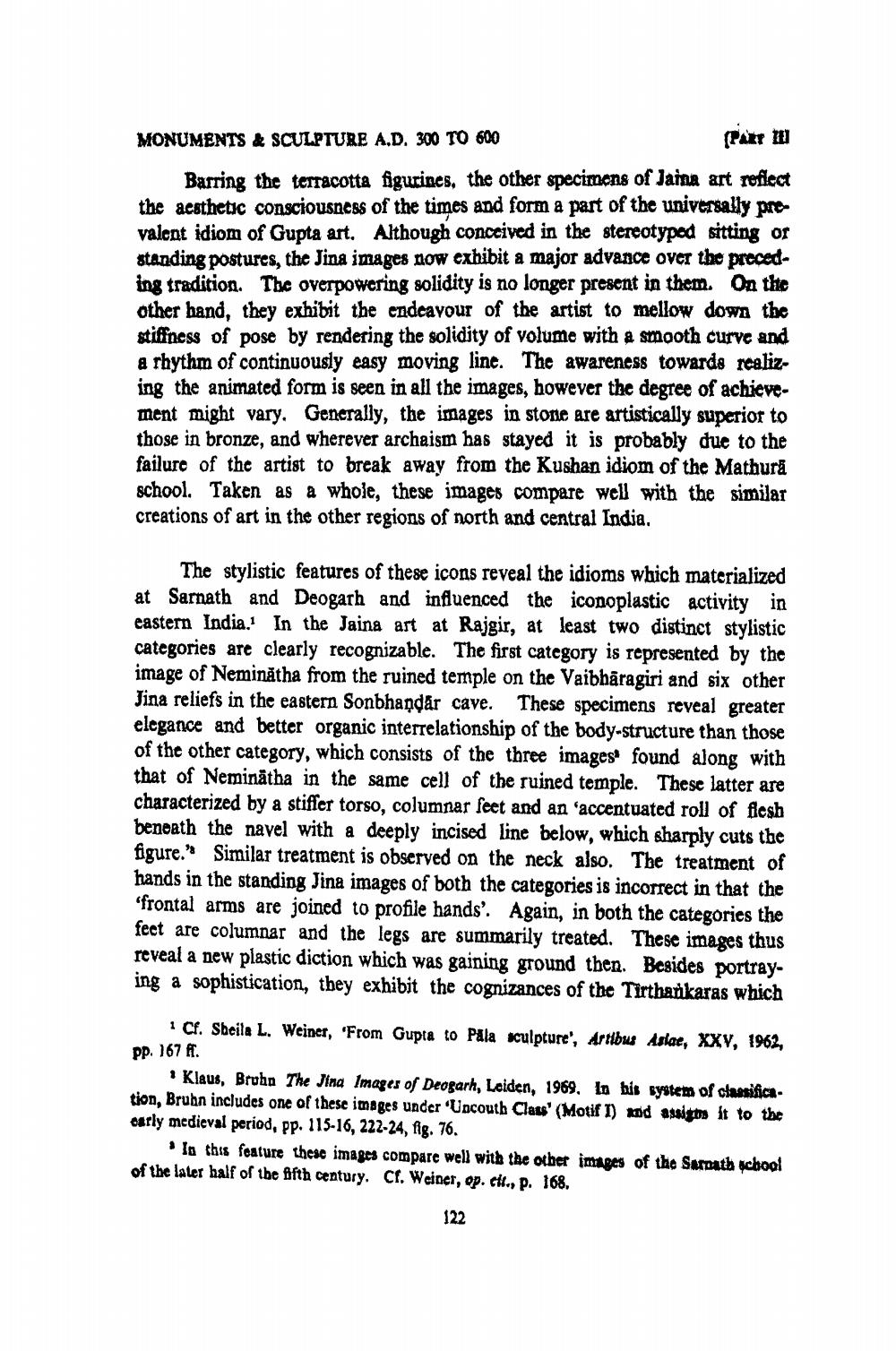________________
MONUMENTS & SCULPTURE A.D. 300 TO 600
(Part II Barring the terracotta figurines, the other specimens of Jaina art reflect the aesthetic consciousness of the times and form a part of the universally prevalent idiom of Gupta art. Although conceived in the stereotyped sitting or standing postures, the Jina images now exhibit a major advance over the preceding tradition. The overpowering solidity is no longer present in them. On the other hand, they exhibit the endeavour of the artist to mellow down the stiffness of pose by rendering the solidity of volume with a smooth curve and a rhythm of continuously easy moving line. The awareness towards realizing the animated form is seen in all the images, however the degree of achievement might vary. Generally, the images in stone are artistically superior to those in bronze, and wherever archaism has stayed it is probably due to the failure of the artist to break away from the Kushan idiom of the Mathura school. Taken as a whole, these images compare well with the similar creations of art in the other regions of north and central India.
The stylistic features of these icons reveal the idioms which materialized at Sarnath and Deogarh and influenced the iconoplastic activity in eastern India. In the Jaina art at Rajgir, at least two distinct stylistic categories are clearly recognizable. The first category is represented by the image of Neminătha from the ruined temple on the Vaibhāragiri and six other Jina reliefs in the eastern Sonbhandar cave. These specimens reveal greater elegance and better organic interrelationship of the body-structure than those of the other category, which consists of the three images found along with that of Neminätha in the same cell of the ruined temple. These latter are characterized by a stiffer torso, columnar feet and an 'accentuated roll of flesh beneath the navel with a deeply incised line below, which sharply cuts the figure.' Similar treatment is observed on the neck also. The treatment of hands in the standing Jina images of both the categories is incorrect in that the 'frontal arms are joined to profile hands'. Again, in both the categories the feet are columnar and the legs are summarily treated. These images thus reveal a new plastic diction which was gaining ground then. Besides portraying a sophistication, they exhibit the cognizances of the Tirthankaras which
Cf. Sheila L. Weiner, 'From Gupta to Päla sculpture', Artibus Asiae, XXV, 1962, pp. 167 ff.
Klaus, Bruhn The Jing Images of Deogarh, Leiden, 1969, ln his system of classification, Bruhn includes one of these images under Uncouth Class' (Motif I) and assign it to the carly medieval period, pp. 115-16, 222-24, fig. 76.
In this feature these images compare well with the other images of the Sarpath school of the later half of the fifth century. Cf. Weiner, op. cit., p. 168.
122




